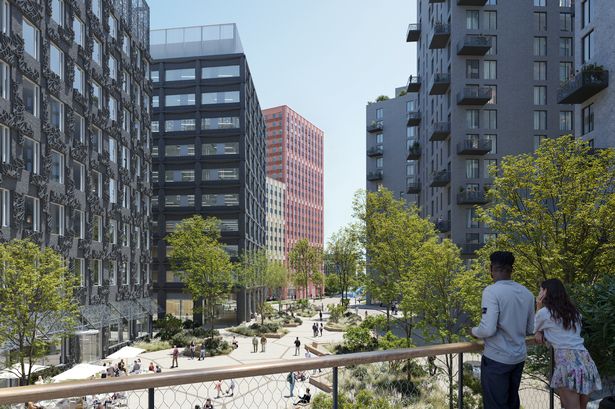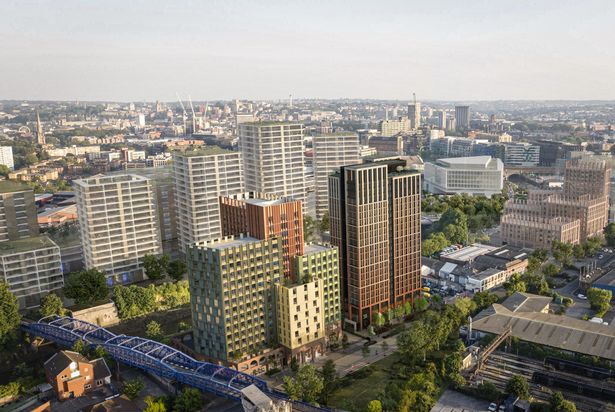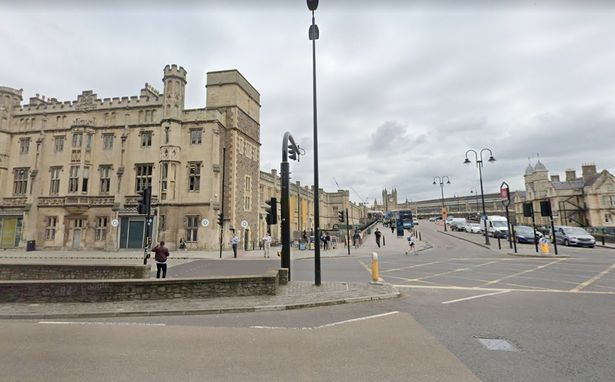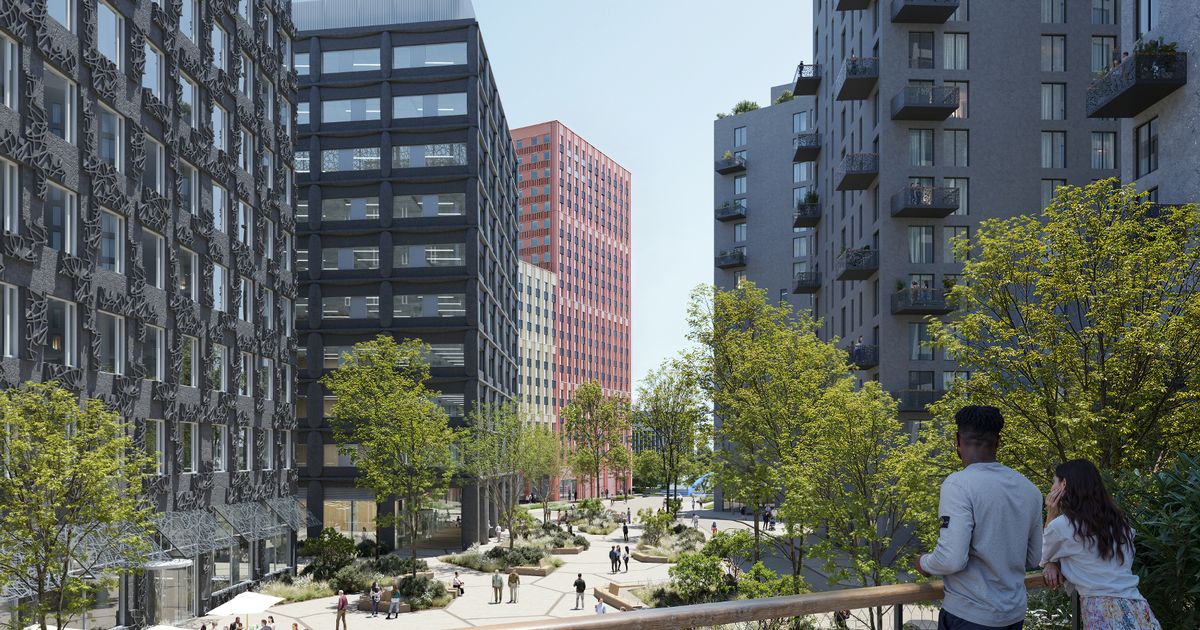“The station approach or ‘ramp’ constitutes its primary setting, and we place great importance on conserving this view”
An artist’s impression of the proposed L&G development at an area known as Temple Island, south of Temple Meads station in Bristol.
(Image: L&G)
The Government’s own heritage and listed-building experts have told planners developing the ‘Temple Island’ site that they need to do better and change their designs, or risk damaging the iconic views of the listed Temple Meads Station next door.
Historic England have written several times to Bristol City Council ’s planners, who are currently processing one of the biggest planning applications in recent years in the city, and said they are concerned about how the tall buildings planned for the area near the station will impact on the Grade I-listed station itself.
Describing Temple Meads as ‘a masterpiece of Victorian engineering prowess’, Stephen Guy, Historic England’s Inspector of Historic Buildings and Areas, said: “The different phases of the station use contrasting architectural styles, but they are united by both their materiality and the flamboyance in their execution.
“The station approach or ‘ramp’ constitutes its primary setting, and we place great importance on conserving this view,” he added.
And what the Legal & General Group (L&G) are proposing to be built on the area just the other side of the station could well impact that view, Mr Guy and Historic England said.
Bristol Live first reported L&G’s plans back in January on the land known as ‘Temple Island’. For year the land to the south of Temple Meads, between Bath Road and the River Avon was called ‘Arena Island’, as it was the location for the original plan for a 10,000-seater arena.
But since that plan was dropped eight years ago, some of the site has been earmarked for student accommodation and the rest is now the subject of L&G’s huge £350 million plan.
The developer wants to build 520 new homes, 200 of which would be classed as ‘affordable’, two new office buildings, retail space, ‘flexible workspaces’, and a new hotel with conference facilities on ‘Temple Island’, after striking a controversial deal with Bristol City Council under previous Mayor, Marvin Rees.
Historic England said the height of the buildings, and they way they are proposed to look is an issue, being built so near such an iconic Grade I-listed building like Temple Meads.
READ MORE: First image of the complete transformation of Temple Quarter revealedREAD MORE: Plans for 22-storey student tower next to Temple Meads set for green light
A large number of other tall buildings have already been given planning permission, and some are currently under construction around the south and east of Temple Meads, as part of the Temple Quarter Enterprise Zone, which is seeing a new University of Bristol campus being created there.
But Historic England said while that has set a precedent, cumulatively, it is going to impact the setting of the original Temple Meads station itself.
“Historic England has some concerns regarding the application on heritage grounds,” said Mr Guy. He is asking planners to enforce changes to the way the buildings are built, with the tallest buildings being set back from the road, and a ‘step’ design so they don’t loom over Temple Meads quite so much.
“While other neighbouring and close by sites have consented schemes for tall buildings, there will, of course, be cumulative impacts, if consented developments are implemented,” he told city council planners.
 An artists impression of new student accommodation on Albert Road in Bristol, with more tower blocks on Temple Island behind, and Temple Meads station now obscured (Image: Cubex)
An artists impression of new student accommodation on Albert Road in Bristol, with more tower blocks on Temple Island behind, and Temple Meads station now obscured (Image: Cubex)
“Despite cumulative impact, we advise that the impact of the proposed scheme, in isolation, could be mitigated through the design and materiality of the tallest block proposed for the site.
“This should appear recessive and contrasting against the Pennant and limestone ashlar of the station building,” he wrote.
“The remaining viewpoints, taken from various points around the city, indicate that the tallest block would be the most visually prominent within the Bristol skyline.
There will be various degrees of impact on the historic environment, many of which will need to be considered by your conservation specialist.
“There are critical viewpoints within the city centre and within its wider setting which will need assessing in terms of impacts on the setting of Grade II, undesignated heritage assets and Conservation Areas.
“We are concerned over the way in which the western edge of the proposed development responds to the public realm and needs to deliver better place-making along Bath Road, a principal and historic gateway into Bristol.
“This is a key part of the site, acting as a gateway into Bristol, but presently a very poor experience for pedestrians and cyclists.
 Looking towards Temple Meads(Image: Google Street View)
Looking towards Temple Meads(Image: Google Street View)
“The proposals offer a significant opportunity to deliver contextual and a much-improved route into the city, which should also moderate between the domestic architectural scale of Totterdown and the evolving city-scaled area around Temple Meads,” he added.
So far, fewer than 20 objections to L&G’s planning application have been received by city council planners, who are due to decide on the scheme in the coming months. Among them are the Bristol Civic Society, the Bristol Tree Forum and the Windmill Hill and Malago Planning Group.
